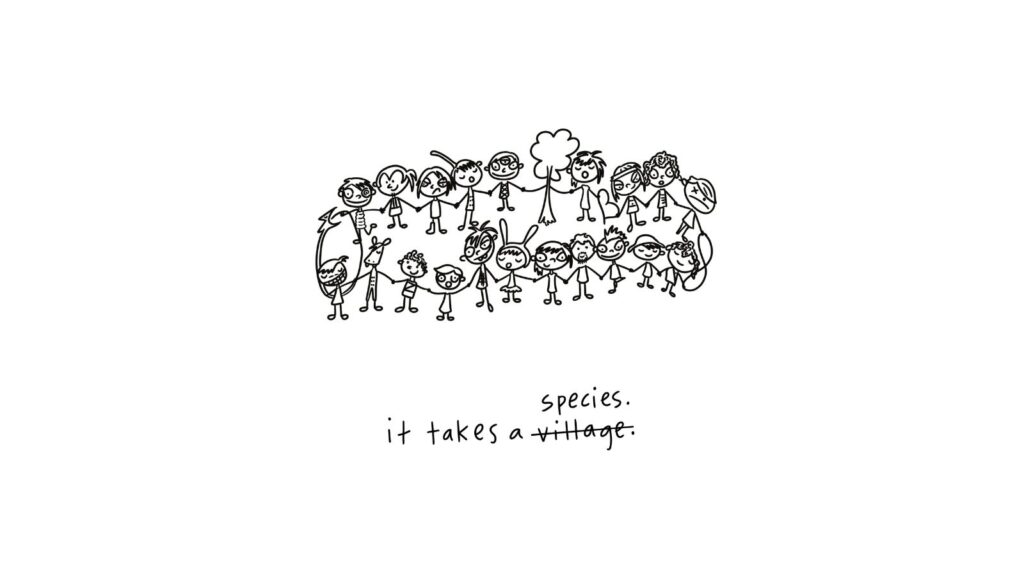Shannon Taggart is one of the most unusual kinds of thinkers: a serious, meticulous, and grounded artist and intellectual dedicated to the ethical study of the paranormal and the occult. In Shannon’s case, her study is through a camera lens. She is a spirit photographer. Shannon has literally travelled the globe, from séances to voodoo rituals to channeling sessions, seeking to capture the ineffable on film.
And she has succeeded. Not in a cheesy, cable-TV way, where doors slam conveniently off camera and infrared lights illuminate people’s eyes. Rather, Shannon has caught images that at once should be there – and shouldn’t. Glitches occur at propitious moments and suggest some kind of unknown causality between the medium and the photographer. Seen from one perspective, the photographic anomalies that Shannon captures are explainable accidents. Seen from another, they are other-normal synchronicities.

Shannon and I consider new ways of viewing the unknown at the next Morbid ACADEMY dialogue at Brooklyn’s Morbid Anatomy Museum, Things That Go Bump, on Wednesday, May 18.
Here I ask Shannon about some of her experiences of the unknown, and we offer a sampling of her photographs, more of which will be viewed and discussed at the event.
1) You’ve analyzed and taken photographs that suggest extra-physical phenomena. Excluding obvious glitches, why might something outside of our common conceptions of physicality show up on film or digital files?
The obvious glitches—blur, motion, flare, fog—are exactly what I am interested in. I began to play with these factors after accidentally creating photographs that suggested the extra-physical. One example happened during a séance, when people claimed to see a woman’s doppelgänger floating peacefully next to her. I did not see this. I attempted to make a straight document of the event, but her doubled face appeared on my film. I found this surprise thrilling—my camera shutter rendered a perfect metaphor for the invisible experience.
I became interested in exploring this photographic synchronicity. I tried conventions that are considered wrong, messy or “tricky”, breaking the rules of what is considered technically correct or professional. I saw how photography’s accidents and errors, the imperfections inherent within the process, seemed to offer a visual language for the immaterial. I began to think about the magic of using light, time and automation as raw materials. I began to consider the conjuring power of photography itself.
This approach does not prove the extra-physical, it resonates with it. My goal is to produce images that blur boundaries and create questions. These photographs contain both mechanical and spiritual explanations, requiring an interpretation to be made by the viewer.
2) Critics of parapsychology often seem obsessively driven to delegitimize any kind of paranormal inquiry. Why do they care so much?
The paranormal is unsettling. It can collapse worldviews, invite chaos and destabilize institutions. This question immediately made me think of Camille Paglia’s words—“Western science is a product of the Apollonian mind: its hope is that by naming and classification, by the cold light of intellect, archaic night can be pushed back and defeated.” This question also brought to mind George P. Hansen’s masterful work The Trickster and the Paranormal, an epic resource that directly addresses the reasons why the paranormal is problematic for science.
3) What would you tell an intelligent, capable young person who wanted to begin investigating the paranormal?
The dynamics are complicated. Embrace the absurdity.

4) What’s the strangest event or phenomena that you’ve ever encountered?
I’ve had a number of mysterious experiences. The most shocking happened with the medium Gordon Garforth, who told me that spirits could manipulate his body and enlarge his hands. I strongly doubted this would happen, but I still attended his séance with my camera. About 20 minutes into the sitting, his wife Gaynor announced that the spirits would begin their work. From my seat about five feet away, my eyes focused on Gordon’s normal sized hand. The next thing I knew, I saw his flesh just effortlessly skip to gigantic. And I screamed, which is a very impolite thing to do in a séance. Then everyone else screamed too. It was the most magical thing I have ever seen. I was convinced I had hypnotically created his gigantic hand in my mind’s eye, and that once I downloaded the pictures, I would see a regular hand. And then I saw the image.
The photograph of Gordon’s monstrous hand can be read as a blurring by my camera shutter that coincidentally mirrors my hypnotic experience, or a fantastically simple and elegant optical illusion, or a documentation of an enlarged hand. I love that the picture has all of these possible explanations embedded within it.
5) Do you believe in ghosts?
I love ghost stories and hearing first person accounts concerning anomalous experiences. I am equally intrigued by theories that take ghosts seriously, but not literally. By this I mean ghosts that cannot be “hunted,” or proven to exist with unequivocal evidence. I’m interested in how ghosts play into a different type of knowledge about the nature of reality, the imaginal and the unconscious, as stated in works like Patrick Harpur’s Daimonic Reality. That said, I would not sleep alone in a house that was purportedly haunted!
Join Mitch Horowitz and Shannon Taggart for Things That Go Bump on Wednesday, May 18 at Morbid ACADEMY presents at Brooklyn’s Morbid Anatomy Museum.















